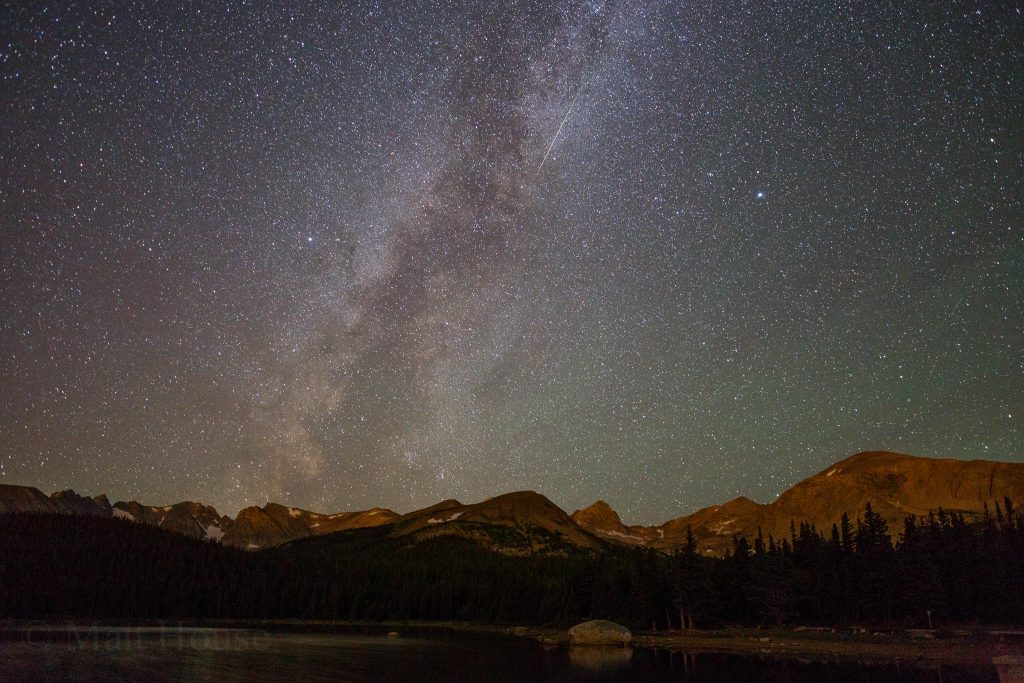Back in August 2016, the rumor was that the Perseid Meteor Shower was going to be great because the Earth was traveling through a thicker cloud of the debris left by Comet Swift-Tuttle. The one problem was the moon. To really see the shower I had to wait until the moon set at 12:30am. So what anyone in this situation would do on a Thursday night, I went to a show at Red Rocks first. Then got home around 11pm, took a quick nap and made some tea before driving up to Brainard Lake around 11:45pm.

One of the first shots. Some accidental brake lights in the parking lot helped add some color to this one
I got to the parking area just before 1am and set up somewhere in the darkness looking generally north/northeast. Brainard Lake is so accessible that I was not alone up there. I actually followed a truck all the way from Boulder up Lee Hill/Lefthand Canyon to the lake. I guess that was ok since that meant a lower chance of running into a moose or something in the darkness. Even though it was August and full on Summer down low, the temperature at Brainard Lake was dipping down into the 30s. Luckily I had grabbed a small sleeping bag and a couple extra layers before leaving the house. It would have been a short night if I hadn’t. Also a crucial last minute grab was my Jetboil and an extra bag of tea so I had a warm drink out there.

This meteor “felt” like it had an explosion and was heading “straight” at me. Also caught is a plane on the left and I believe a cloudy looking galaxy in the top right.
Over the next 2 or 3 hours I took hundreds of shots looking in different directions of the sky. Some looking straight up, and some looking at the Indian Peaks over the lake. The best way to shoot meteor showers is to first get the settings dialed by taking some test shots. Then just point in a direction and, using a remote, lock the shutter button down to take photos continuously. I rented a Zeiss 25mm f/2 lens just for shooting this meteor shower, and I thought it performed great. I left the aperture wide open at f/2 and manual focused to infinity. Then took shots at different exposures ranging from 15-30 seconds depending on the composition I had. Shorter exposure times are crucial to minimize star trails, unless you’re trying to get star trails. But the goal here was catching meteors and leaving the stars as close to points as possible.
One negative of being so close to the towns in the Front Range (besides the light pollution) is that a lot of planes fly over. So quite a few shots looked like they had meteors at first, but it was really just the lights of an airplane moving through. It’s easy to pick out the real meteors since they are usually green while the planes are red/white lines of dots. Also satellites can look like meteors. They have a distinct shape and color, being more white with a fat center and thin ends. Satellites look like that since they are spinning and reflecting sunlight as they move across the sky.
The photos speak for themselves. The Perseids did not disappoint. It was well worth the lack of sleep and extra cups of coffee on Friday morning. Hopefully the meteor showers of 2017 are just as good. If only that pesky moon decides to go to bed at a more reasonable hour.



